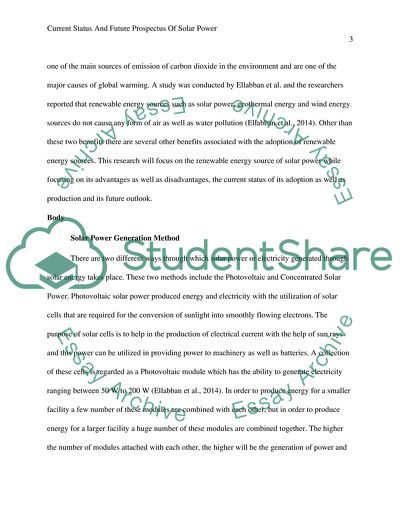Cite this document
(Current Status and Future Prospects of Solar Power Coursework Example | Topics and Well Written Essays - 2000 words, n.d.)
Current Status and Future Prospects of Solar Power Coursework Example | Topics and Well Written Essays - 2000 words. https://studentshare.org/engineering-and-construction/1868162-current-status-and-future-prospects-of-solar-power
Current Status and Future Prospects of Solar Power Coursework Example | Topics and Well Written Essays - 2000 words. https://studentshare.org/engineering-and-construction/1868162-current-status-and-future-prospects-of-solar-power
(Current Status and Future Prospects of Solar Power Coursework Example | Topics and Well Written Essays - 2000 Words)
Current Status and Future Prospects of Solar Power Coursework Example | Topics and Well Written Essays - 2000 Words. https://studentshare.org/engineering-and-construction/1868162-current-status-and-future-prospects-of-solar-power.
Current Status and Future Prospects of Solar Power Coursework Example | Topics and Well Written Essays - 2000 Words. https://studentshare.org/engineering-and-construction/1868162-current-status-and-future-prospects-of-solar-power.
“Current Status and Future Prospects of Solar Power Coursework Example | Topics and Well Written Essays - 2000 Words”. https://studentshare.org/engineering-and-construction/1868162-current-status-and-future-prospects-of-solar-power.


